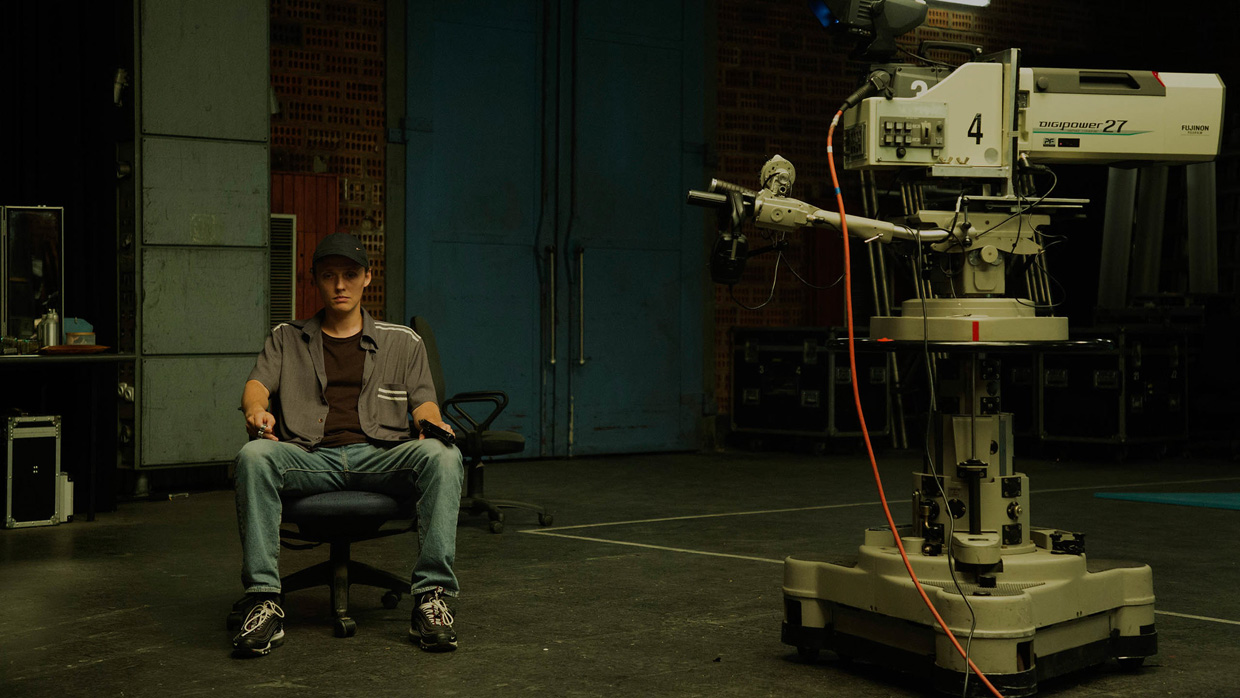 Back to selection
Back to selection
“Our Goal Was to Show Precisely His Changing Emotional States”: Editor Jarosław Kamiński on Prime Time
 Prime Time
Prime Time Jakub Piątek’s feature debut Prime Time is a thriller set in the deadly world of broadcast television. In 1999, a youth named Sebastian (Bartosz Bielenia) hijacks a TV studio, taking two hostages along the way. His reasons for doing this slowly unravel, including to himself. Editor Jarosław Kamiński walks us through the chaos of Prime Time’s editing and how best to portray a shifting protagonist’s emotional states.
Filmmaker: How and why did you wind up being the editor of your film? What were the factors and attributes that led to your being hired for this job?
Kamiński: Jakub Piątek, the director of Prime Time, invited me to cooperate on editing of that movie. I think it was influenced by our earlier acquaintance—we know each other from the Lodz Film School. I also knew the producers well—we already worked together. It was also clear from the first meeting that the film will have two editors, which turned out to be a great solution.
Filmmaker: In terms of advancing your film from its earliest assembly to your final cut, what were goals as an editor? What elements of the film did you want to enhance, or preserve, or tease out or totally reshape?
Kamiński: We watch the film by following the film characters—we identify with them, experience their dilemmas, feel their moods, follow them, and after the screening is over, we think about them. Therefore, the most important thing in editing is to build strong characters also by using means of film expression. There are the actors who give us editors the most important building footage, thanks to which the viewer leaves the cinema touched or delighted. It was no different in the case of Prime Time—our protagonist, Sebastian draws the viewers’ attention. Our goal was to show precisely his changing “emotional states,” give the viewers as close as possible access to his personality. So, we were shaping the structure of the film to achieve that aim.
Filmmaker: How did you achieve these goals? What types of editing techniques, or processes, or feedback screenings allowed this work to occur?
Kamiński: Well, there is only one solution to solve the problem: keep working on the edit. This is often helped by screenings when producers or filmmakers are present. Important thing—they should be completely unfamiliar with the script and film topic. Their remarks, even when completely inaccurate, are always a source of creative inspiration and help to find a surprising narrative or editing solution.
Filmmaker: As an editor, how did you come up in the business, and what influences have affected your work?
Kamiński: I made the decision that I wanted to study film editing and work in this profession after watching one particular movie four times. I always recommend it to my students, and some of them have written extensive papers on it. I saw an excerpt of this movie a week ago by accident—it’s still magnetic on me. This was All That Jazz by director Bob Fosse, the outstanding editor Allan Heim won an Oscar that time. I was studying editing at famous Czech film school FAMU in Prague.
Filmmaker: What editing system did you use, and why?
Kamiński: Since 1994 I’ve been working on Avid Media Composer. It happened a few years ago that I was using two different editing systems, which was also an interesting experience. But one of these programs has stopped growing and I very much regret it. The manufacturer focused on a mass audience, stopped developing the application used by professionals. So, I stayed with Avid—it’s probably a matter of using the program for a long time.
Filmmaker: What was the most difficult scene to cut and why? And how did you do it?
Kamiński: I think I couldn’t point a single scene—but some of them were quite long (eight to ten minutes), had their own interesting structure and editing them was a challenge. The director often worked with the actors improvising, which, taking into account long timing of the scene gave very interesting results and rich material for editing. So, our work was as always—polishing the scenes and looking for the best shape of the whole movie.
Filmmaker: Finally, now that the process is over, what new meanings has the film taken on for you? What did you discover in the footage that you might not have seen initially, and how does your final understanding of the film differ from the understanding that you began with?
Kamiński: Despite the fact that the movie talks about events occurring 20 years ago, some viewers perceive it as something immersed in the present day. For me that’s a surprising discovery, I’m personally happy that our protagonist and the subject of the film could so deeply resonate in the contemporary world.
